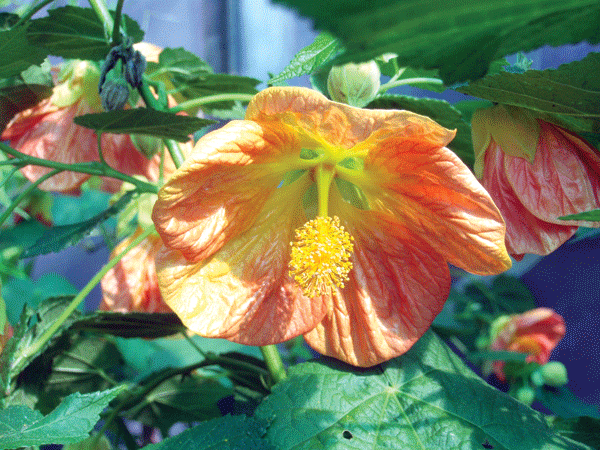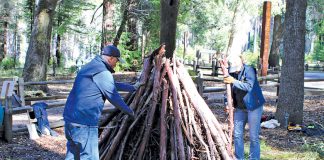
It came out of the earth suddenly, pushing soil and plants that were in its way to the side. Just a bit of moisture had allowed this large clump of honey mushrooms to emerge and start its path to reproduction. At this time of year when the trees are turning the color of flame and some have already gone into dormancy it seems the earth is growing silent. Winter will soon be here. For nature life continues. Look around you and be thankful for the bounty, the restfulness, the time to enjoy these beautiful mountains that we call hom
The Pacific Giant salamanders in the forest duff are resting up for next season’s batch of young. Maybe now that we’ve had some rain, the deer will have something to eat other than my garden. As the weather cools, my garden plants are looking past their prime. The seed heads that remain invite small song birds to feast on what remains. Chickadees hop from plant to plant. They even find something to eat in the Japanese maple leaves and the old dried hydrangea flowers that have turned a dusty rose color. Spotted towhees scratch for seeds buried under fall leaves. I’m always slow to cut down and clear everything away, but there are some things I should be doing this autumn. I’ll pay the price if I leave everything for next spring when it all needs doing at once.
First, I’ll cut back perennials such as hostas, asters and mums, which collapse into a gooey mess and shelter slugs and snails. I’ll pick up and dispose of diseased leaves, especially under the roses to prevent pathogens from spreading. Coneflowers, ligularia and rudbeckia flowers and ornamental grasses can stay to contribute winter interest for me and the birds.
I’ll leave as much foliage as possible to provide cover, protection from cold winds and foraging spots for other critters and good insects. I’ll wait to cut back the stems and foliages of not only the grasses but evergreen perennials, salvias, hardy fuchsias until spring. There are few things as rewarding as seeing your winter garden turn into a sanctuary for wildlife.
As weeds emerge, I’ll spend a little time here and there keeping up with them. There are 300 dormant weed seeds per square inch of soil and I don’t want to add to that.
I don’t have the space to plant a cover crop, so I like to top dress the soil with compost or bark chips. I have a few new trees that need staking to secure them through the winter. This prevents breakage and allows new roots to grow deep and stable. Be sure to set the stake on the windy side of the tree and tie loosely so it has some wiggle room This movement stimulates the trunk to grow thicker. Come next summer, the trees will probably be ready to stand on their own. I don’t want to keep them staked longer than necessary. Also, check any trees or shrubs that were transplanted and are still tightly bound to a stake. Remove or reset the stake so the trunk will not become girdled as it grows.
A word about all those leaves that cover the ground, the lawn and the perennial beds at this time of year.
You can build up your garden soil by running a mower over them to chop into smaller pieces and spread over the soil. Worms and other organisms will start to break them down right away. Next spring, dig what’s left into the soil. If you leave more than an inch or two of whole leaves on top the rains will compact them into a soggy mess and prevent oxygen from reaching the soil. If you have too much of a good thing when it comes to leaves, it’s best to put them into your green waste can.
Hummingbirds still need a nectar source at this time of year. Anna’s hummingbirds live in this area all year long. They need your nectar even more in the winter when very little is in bloom. My abutilons are a winter favorite for them in my garden. Keep your feeders up year-round and keep them clean.
Happy Thanksgiving from The Mountain Gardener.
– Jan Nelson, a landscape designer and California certified nursery professional, will answer questions about gardening in the Santa Cruz Mountains. E-mail her at ja******@*ol.com, or visit www.jannelsonlandscapedesign.com to view past columns and pictures.










